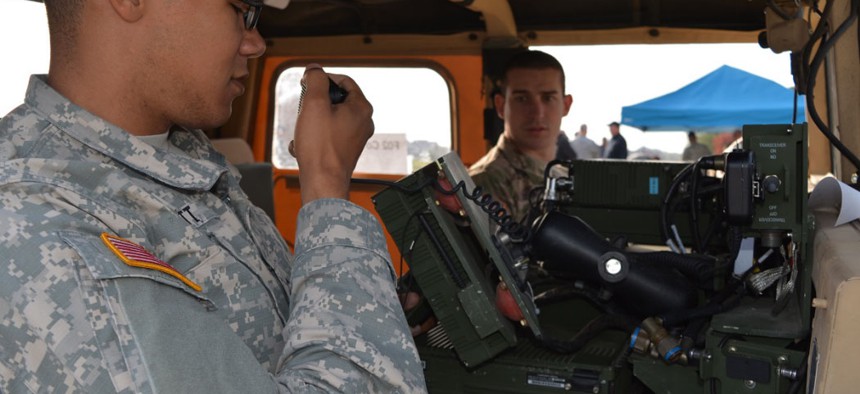Army looks to boost security, bandwidth with network modernization
Officials say open standards, cloud architectures are keys to making their network more efficient and effective.
The Army, like the Defense Department as a whole, is undergoing a series of network modernization efforts. Two key initiatives inherent in this effort are improving security and bandwidth, and migrating to cloud architectures is one way to kill both birds with one stone, according to some Army officials.
“Currently, what we found is we needed to improve our security we needed to improve…the bandwidth to be able to move forward and take advantage of a cloud-enabled network environment and to be able to take advantage of having resources in a central location and great scale,” Chief Warrant Officer Derrick Edwards said during a panel discussion June 15.
With bandwidth improvements, Edwards said, the Army is trying to improve DOD Information Network connectivity from various installations. Following the panel at the Brocade Federal Forum, Edwards told Defense Systems some of the technologies he’s interested in are technologies that can help improve bandwidth from energy efficiency, cost efficiency and manpower efficiency standpoints. Regarding specific technologies, Edwards said the service is looking for “open standards-type technologies that allow us to not necessarily use a single vendor to do a single function but where we can be able to pick from multiple vendors to do multiple things such as…network connectivity, plus security plus Web content filtering, as an example.”
The Army has made efforts recently to improve battlefield bandwidth, such making use of very small aperture terminals and working with the Navy to incorporate Manpack radios and the Joint Battle Command-Platform with the Navy’s global Mobile User Objective System satellite constellation.
Edwards added that in terms of security one of the Army’s lines of effort is improving not only network operations but the cybersecurity posture within the network. The DOD-wide decree to move to Windows 10 has been billed as a security-building measure as well. “We can see some goodness in the Windows 10 migration,” Edwards said, adding that from the Army’s perspective the best techniques for migration are wide-scalable programs of record.
The Army is also content with leveraging commercial solutions externally as opposed to owning them outright. “One of the areas that we’ve focused on more lately is seeing what we can get as a service versus owning it,” Maj. Gen. Garrett Yee, Army lead for network modernization, said at the Federal Forum. Tech refreshes, licensing and procurement process were all various problems associated with owning services, said. “So once we buy a certain type of technology and we owned it, we’re going to own it for a while…if we buy as a service, from a vendor, a collection of vendors, partnership, as they upgrade what they’re doing and they advance what they are doing, we potentially see the benefit of that as well,” he said.



